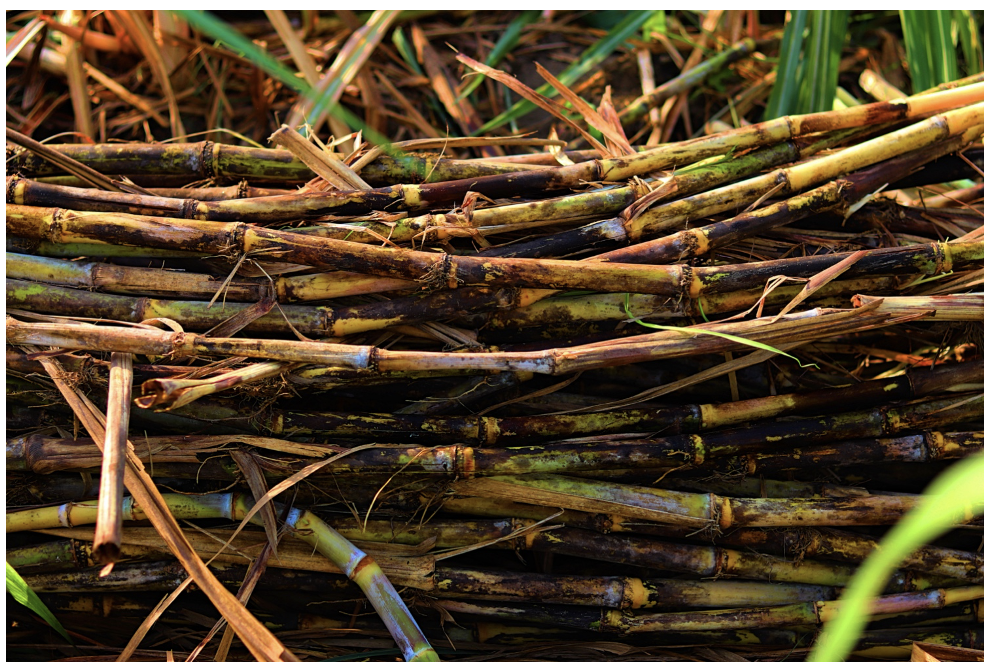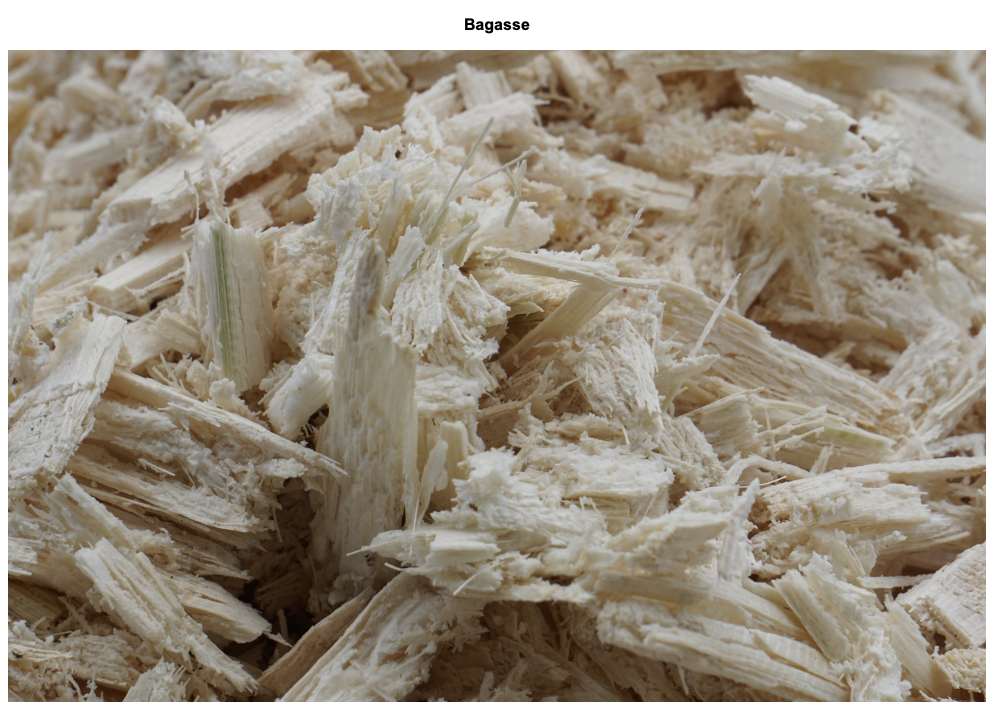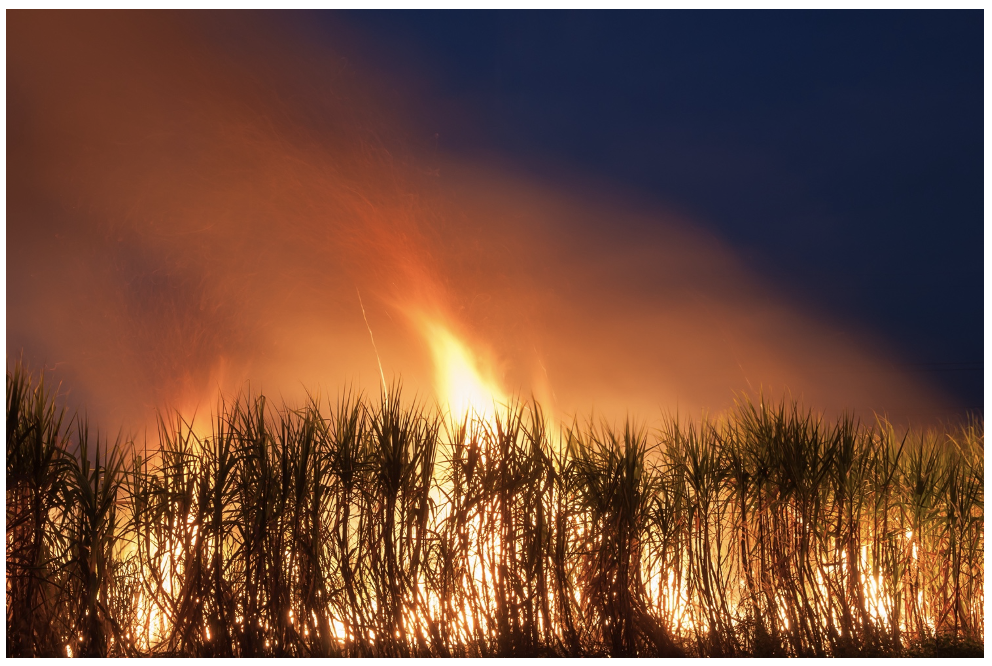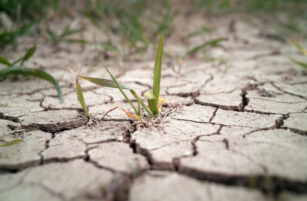- Last time, we started to explore issued related to sugarcane.
- We examined the implcations around burning cane to facilitate a manual harvest.
- We also addressed the post-harvest burning process.
A Horrible Day
The worst day of my career in agriculture was easily in Uttar Pradesh, India. I was teaching how to estimate yields and sugar content (BRIX) on sugarcane to provide a reliable all India estimate of the crop size; something that’s commercially valuable.
To do this, I had to cut samples of green cane with a machete. The heat and humidity was off the scale, made worse by the need to wear rubber wellington boots due to the plethora venomous snakes.

The green tops of the cane, which had to be removed, were spiky and could cut easily cut you, and constantly having to bend down because the cane at the base has the highest sugar content was back breaking. It was so easy to see why sugarcane is burned especially before manual harvesting…
Just as I finished for the day, I was hit by the strongest rainfall I have ever seen: Indian monsoon rain. Exhausted and bedraggled, I retreated.
In the last article, we demonstrated the deleterious effect of burning on the environment by producing copious quantities of greenhouse gasses (GHG), but there’s another story, less often discussed. Cutting cane manually is associated with acute kidney problems because of heat stress and dehydration, as well as respiratory problems from the smoke caused by burning.
So, in every way, environmentally and on a manual labour force, from an SIA point of view, there’s a powerful argument for harvesting mechanization, and especially green harvesting. In addition, many of the sugarcane regions of the world are starting to face rural labour shortages from migration to the urban areas and a younger generation who no longer wants to carry out this manual work. With sometimes limited infrastructure, small patchwork farms, and lack of money, mechanization in some countries isn’t going to be easy, but the direction is clear. In some cases, contractors and cooperatives can help but there are certainly challenges.
Other Reasons for Green Harvesting
In SIA, the production of the whole plant in the field plus any additional benefits to a following crop is all considered as well as environmental and other considerations. This also means engaging with the producer (sugar mill or ethanol producer).
More than one third of the energy in a sugarcane plant is in the tops and leaves (trash), and this is lost when burning is used. From 2002, the São Paulo government in Brazil realized that this energy could be utilized and started a series of radical reforms and phased in targets for zero burning by 2021 in areas that could be mechanized, and the same by 2031 for areas, where mechanization is not currently possible. In this region, most of the sugarcane is used to produce ethanol but the principles discussed could equally apply to cane sugar production. This also coincided with national reforms of the electricity industry. Farmers who didn’t comply and continued burning were fined on a “producer pay for environmental damage principle”. In effect, farmers were forced to use green mechanized harvesting.
There were also incentives. The conversion of this biomass into electrical energy (cogeneration) requires the use of boilers with steam turbines, and the boilers are much more efficient at pressure. Special loans were provided to allow these mill conversions. The excess electricity, where infrastructure was available, as well as from bagasse, could be sold to the national grid.
Bagasse is the solid by-product once the cane juice has been extracted and is an important source of electricity in a sugar mill. In addition, in a conventional sugar mill, burned sugarcane needs large quantities of water to wash off the soot, whereas green cane does not. Efforts to use less water by all processors has also been an area of concentration, and today, over 95% of water in this region is treated and reused and water usage overall has halved.

Although the São Paulo model is related mostly to ethanol production, the use of trash is also relevant to a conventional sugar mill. Possibilities include bailing the trash post-harvest, improved separation and use of Extraneous Material (EM, leaves and tops). All these methods are useful instead of having a post-harvest burn, and are often used because the trash is bulky to transport or is not considered a viable resource. For SIA, the use as mulch is probably the best, as it returns nutrients and organic matter to the soil with implications for lowering fertilizer use, but producing ethanol to replace gasoline is also a reasonable argument.
There are also significant benefits in the field from green cane harvesting, as well as some disadvantages that have to be considered, especially on lost yield. Burning is associated with lower sugar quality because dextran develops unless harvest can be completed and the delivery to the mill is made within 24 hours to avoid major deterioration. Under hot and humid conditions, significant deterioration can occur within 10 hours. Dirt and mud can also aggravate the deterioration. Dextran is a contaminant which reduces cane juice purity and inhibits the growth of sugar crystals, and reduces the stickiness of raw sugar making packaging more difficult. It’s another example of why in SIA the value of the whole crop, including quality, has to be taken into consideration (not just yield).

In addition, sugarcane is a thirsty crop and, when not rain fed, the leftover trash as mulch reduces the need for irrigation water by 10-15% and weed control costs and agrochemical Active Ingredients (AI) by perhaps 30-40%. It also reduces soil erosion and runoff.
A Problem…
For all the commendable SIA efforts in Brazil, and apart from the already mentioned costs of mill changes and infrastructure costs, one of the largest problems of green harvesting is the harvesting machinery itself.
This is so different to our discussions on arable crops where in-field, non-harvest related techniques, and use of inputs dominated the conversation.
It’s an engineering design conundrum (think extractor fan speed and cane loss), and we’ll explain why and what’s being done about it in the next article, whilst looking at fertilizer and other inputs in sugarcane.

Other Opinions You May Be Interested In…
- Sustainable Agriculture: Innovative Pest Control
- Sustainable Agriculture: Pest Control
- Sustainable Agriculture (UK): Not So Sweet Soils














